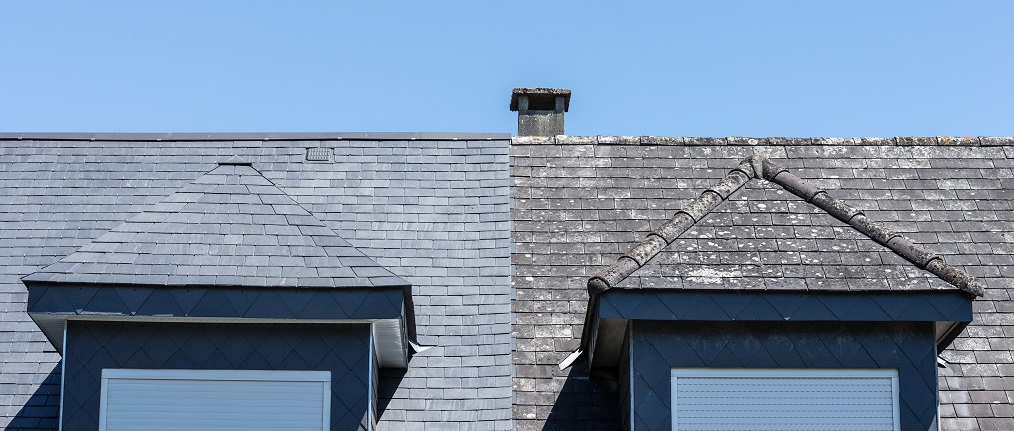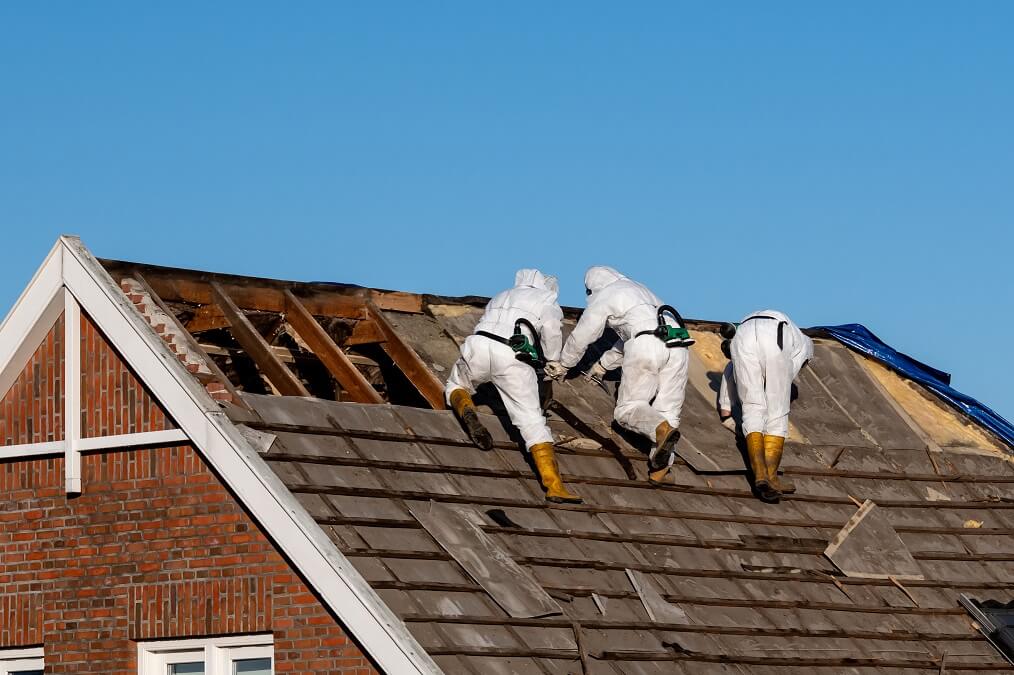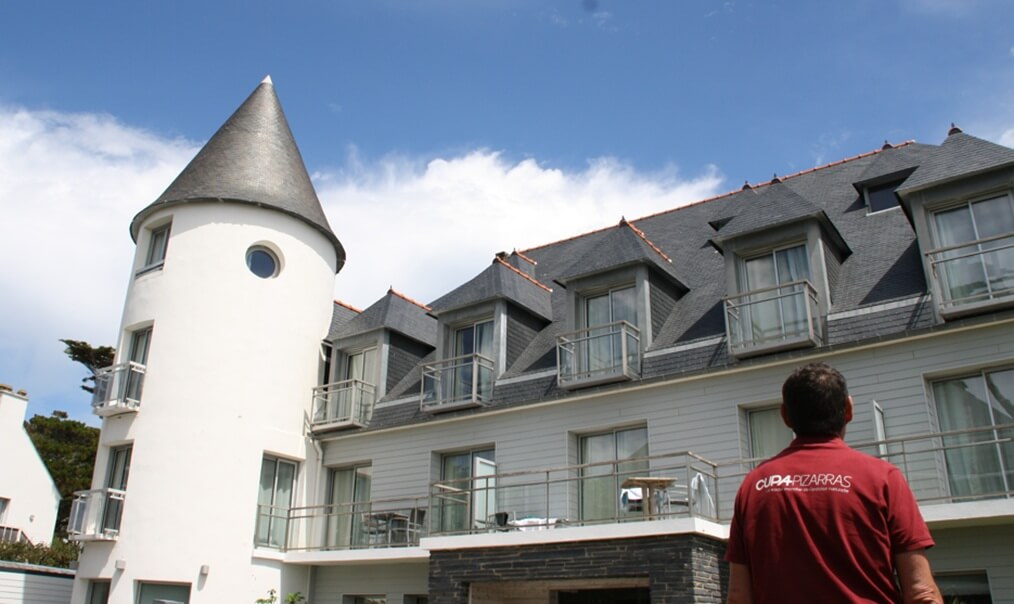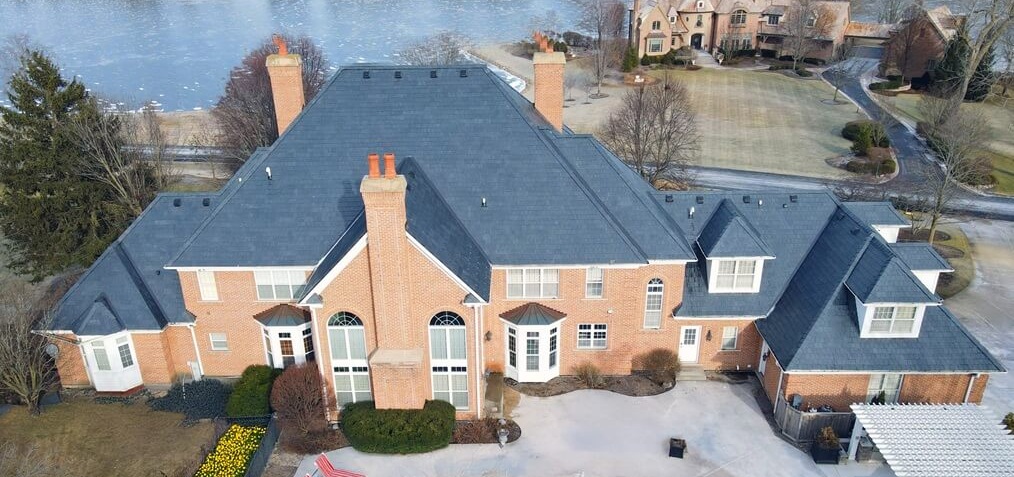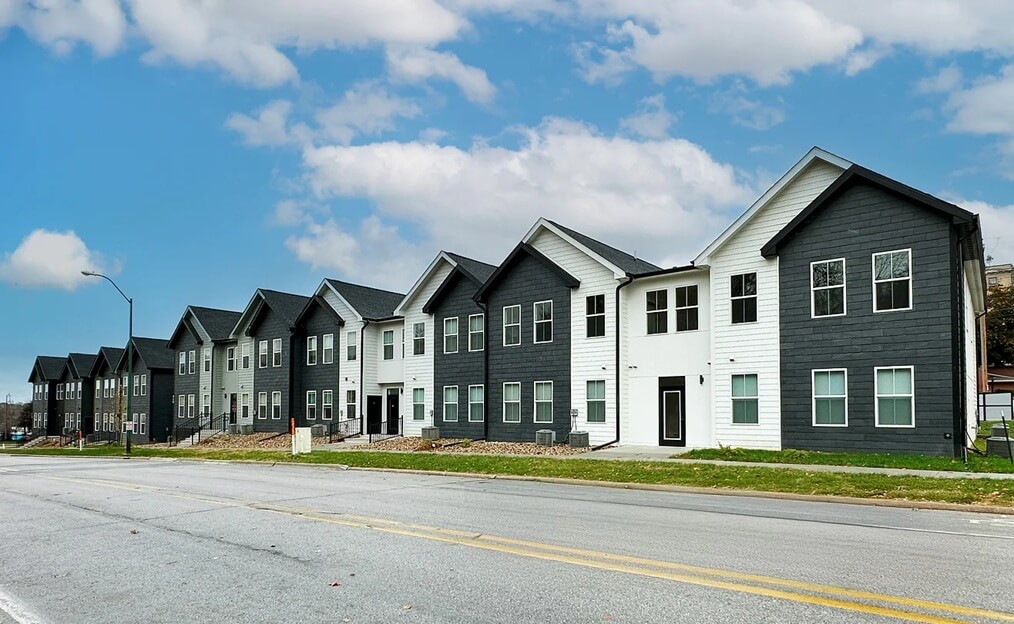“No, natural roofing slates do not contain asbestos, it is geologically impossible”
For a while now that I hear more and more people asking about the asbestos content of roofing slate. There are two ways to give an answer to this concern, the short one and the long one.
First, the short one:
Roofing slates do not have asbestos, it is mineralogically, chemically and geologically impossible.
In the picture: renovated roof with natural slate (left), old roof with asbestos (right).
Now, the long one:
As you know, roofing slate is formed from clay. These clays are the remains of the eroding and wearing of rocks, only the toughest minerals can survive to this cycle. Our starting material, the clay, is made of no more than quartz, mica and some chlorite, which are hard, dull and common minerals. These type of sediments are also called pelitic sediments, from the Greek pelos (clay). Once this clay is buried inside the Earth, it begins its transformation into slate, due to the slow effect of the tectonic forces, which cause an increase in temperature and pressure.
This transformation implies the dissolution of some of the original minerals and the formation of new ones. These new minerals are mostly a recrystallization and rearrangement of the old ones, so the resulting rock (slate) has also dull, strong and hard minerals: quartz, mica and chlorite. If more pressure, time and temperature is applied, the mineral evolution would continue, and new ones would appear. This creates a rock with a characteristic cleavage that can be split and used as a roofing material… you know, the old tale we have discussed before about roofing slate origins.
Alternatively, asbestos minerals need different ingredients. Asbestos only form from basic and ultrabasic rocks, which are rock with a very low quartz content. It is not possible to create asbestos from a pelitic sediment, as it is impossible to make an apple pie from a steak. There is not much more to say. But, what is the problem with asbestos? Asbestos is the name of a group of fibrous minerals, such as chrysotile (white asbestos), amosite (brown asbestos), or crocidolite (blue asbestos), among others.
They are flexible and can resist high temperatures, which gives them a lot of industrial applications. Asbestos have been used by mankind since prehistoric times. However, by the beginning of the 20th century, some scientific studies discovered the toxicity of these useful minerals. This did not prevent their use in new industrial applications during the 20th century. You could find asbestos in many objects, from blankets, car brakes, even artificial snow flakes used in Christmas decoration.
One field in which asbestos were used profusely was in construction. Insulators, walls, paints, you name it. The asbestos properties were attractive and useful for building purposes. The public health problem grew exponentially, and by the end of the 20th century, the use of asbestos was banned in most of the countries.
However, there are still many buildings constructed during the last century with important proportions of asbestos in their materials. This is a problem, because the health of the people using these buildings is in danger, but removing and substituting the asbestos can be even worse. After the infamous attack of 9/11, the towers of the World Trade Center released an unknown amount of asbestos, which risked the lives of the emergency workers. Dealing with asbestos is not a joke.
It is understandable why some contractors are very cautious when removing any roof constructed in the last century.
Asphalt tar paper and shingles, and tiles made of mineral fiber and fiber cement, are good candidates to have asbestos on their composition, and need a special procedure for their removal.
Not in the case of natural slate, these minerals are not compatible with it. It may happen that other parts of the roof have asbestos on their composition, but never natural slate.
However, there is some kind of confusion with this. It is normal to find “experts” on the internet warning of the dangers of asbestos on roofing slates. Asbestos, they say, can be released when roofing slates are broken. This is a real nonsense. Also (and this is more serious), some scientific works wrongly use the term “roofing slate” to refer to other materials which indeed contain asbestos. For the last years, I have read papers from medical researchers studying the prevalence of cancer related with roofing materials in Korea which they call erroneously “roofing slates”.
These medics and doctors know a lot about their subject, but are using the wrong word. Be aware of this, and never get confused: natural roofing slates do not have asbestos.
Why are the characteristics of natural slate unbeatable? We have published a comparative of materials where you can see the undeniable advantages of natural slate.

